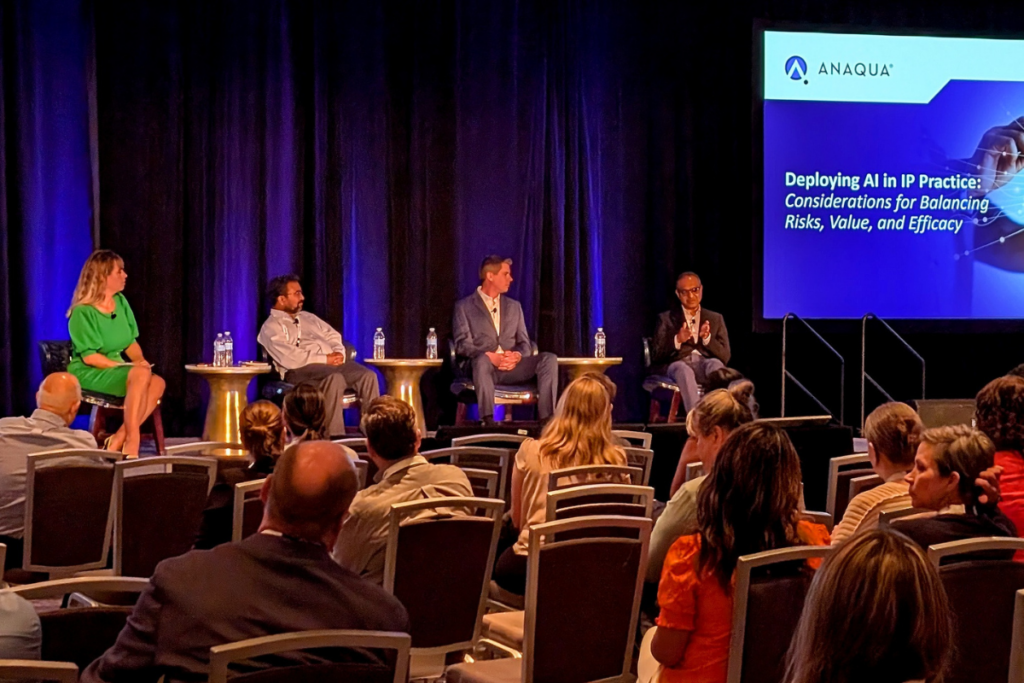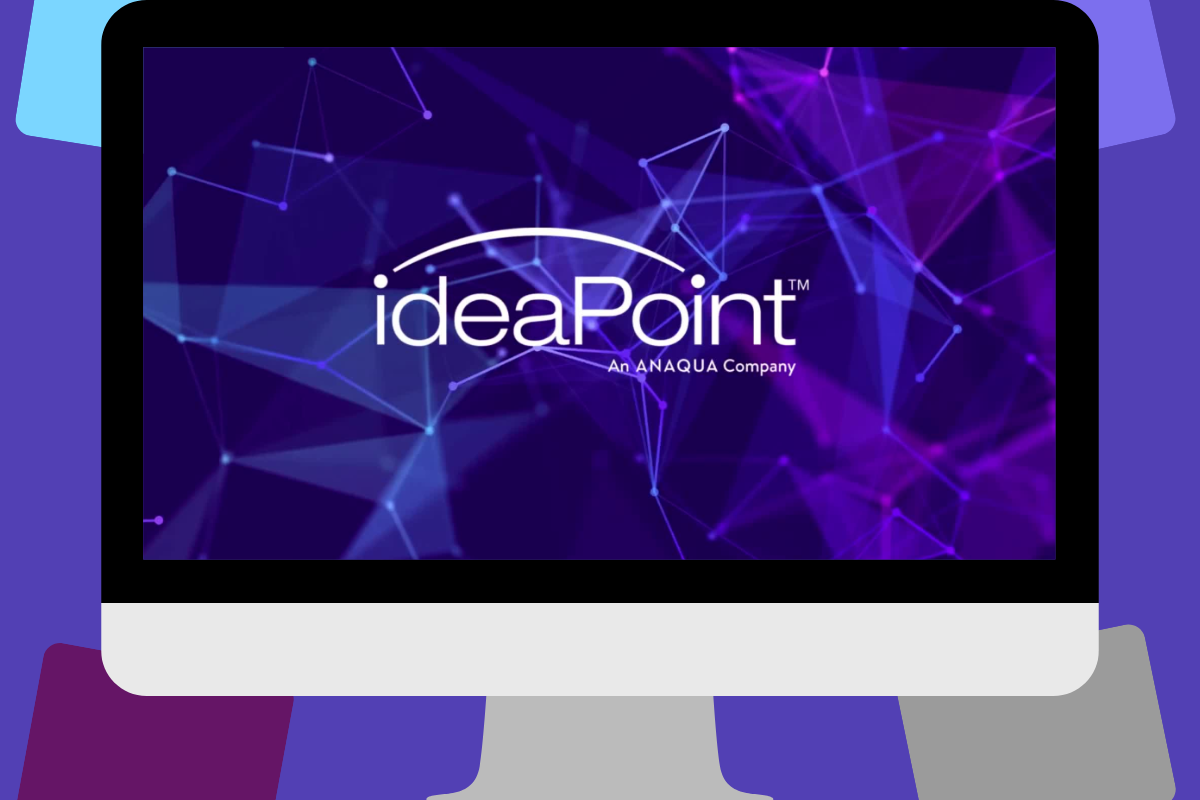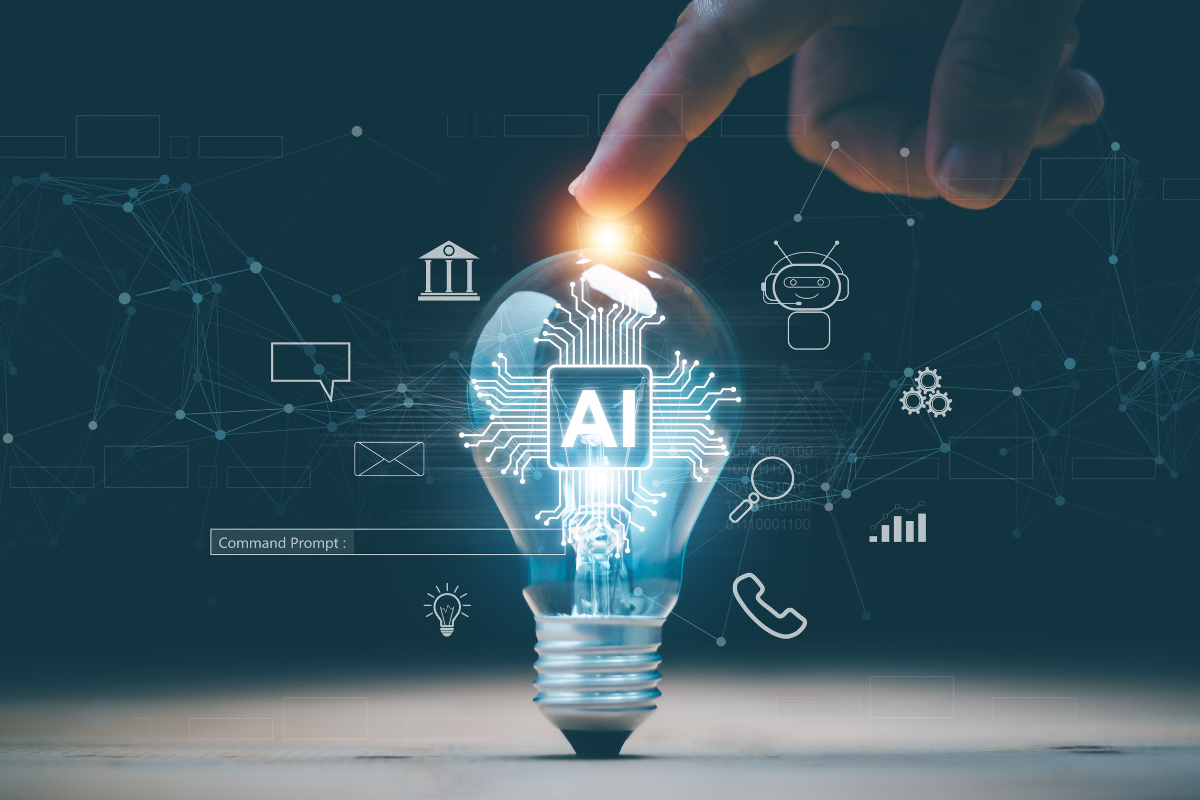AI is changing the landscape of intellectual property and the tools available for practicing law as we know it—a central theme that emerged from The Anaqua Experience Conference. Insights from the conference’s speakers revealed how global corporations and law firms are prioritizing AI to navigating maximizing its potential . Speakers dove into the regulatory landscape for AI, explored some of the most practical use cases for AI, and discussed how IP leaders can be at the forefront of change.
1. Regulating AI and Intellectual Property Will Be Complicated
One of the topics discussed by David Kappos, Co-Chair of Cravath's Intellectual Property Practice and Former Under Secretary of Commerce and Director of the USPTO, regarding AI was the Executive Order issued by President Biden last October and the recent guidance issued by the USPTO in April.
He said, "I think we have fallen into the trap of equating artificial intelligence with invention. AI helps scientists, engineers, and experts invent. It increases productivity and enables people and salespeople to be more effective, but it doesn't invent. The recent USPTO guidelines are based on the notion that AI is involved in making inventions. This is like saying that microscopes or computers make inventions. These guidelines could create challenges in the future by requiring new disclosures, potentially prejudicial disclosures, in patent applications that somehow benefit from the use of AI."
On the other hand, he acknowledged that U.S. policy on AI has been positive in that it hasn't been over-regulated. He commented, "I appreciate that the U.S. government at the federal level has been reluctant to legislate proactively. Instead, they legislate reactively to solve problems once they're demonstrated, rather than trying to be omniscient and anticipate problems before they're demonstrated."
Matthew Sked, Senior Legal Advisor and Lead Coordinator of the AI/ET Policy Working Group, USPTO, in a separate panel discussion shared his insight into the guidance documents developed by the USPTO. He said, "One big takeaway from this USPTO guidance document is that we haven't created any new professional responsibility rules here. There are some issues that we see potentially with AI, and we discuss some risks that you should consider."
He continued, "The USPTO is not taking a position that you should or shouldn't use this tool. AI can bring a lot of benefits to your business, a lot of benefits to your practice, but there are risks associated with it. You should be aware of those risks and take them into consideration. The document goes through different types of use cases of AI for IP practice."
2. Incorporating AI Tools into IP Processes Looks Promising
One of the central themes throughout the conference was how advances in AI and automation can expedite routine IP processes and tasks. According to the recent Thomson Reuters 2024 State of the Corporate Law Department Report more than three-quarters (76%) of in-house legal professionals said they believe that AI has the potential to help them achieve their goals of greater internal efficiency, while 72% see using technology to simplify their workflow as a high priority.
This concept was illustrated in the panel presentation by Raghu Chinagudabha, Sr. Director, Patent Engineering & IP Operations, Microsoft, Sunjay Mohan, Vice President, Global Head of Patents & Trademarks, SAP, Matthew Sked, Senior Legal Advisor and Lead Coordinator of the AI/ET Policy Working Group, USPTO, and moderator Olga V. Mack, Digital Transformation Executive, Above the Law + ACC Docket Legal Tech & Future of Law columnist.
Raghu Chinagudabha started the discussion by saying, “Recent business and AI articles have been discussing that AI won't replace humans but humans with AI could replace humans without AI. So that's just to underscore the importance of AI as we move forward. So, to be successful as we go down this path, you must think about the daily work of any IP professional. Number one, your job is basically to make decisions based on the information that you have in your portfolio and to digest that information to determine validity, the value of the patent, and so on. AI can help you systematically pull in information to help you make decisions more easily.”
Sunjay Mohan highlighted different areas of the IP lifecycle where AI can help IP practitioners: "AI could have a huge impact on improving the quality of the invention intake process. I don't just mean the process of filling out the form better. But also, the initial interaction that in-house counsel has with inventors, so that those conversations can be captured and then turned into documents. AI is good at summarizing documents. It can be very effective in consuming unstructured documents like conversation transcripts, drawings or PowerPoint presentations and summarizing them to form an effective description of the invention, which can form a basis for a draft. Hopefully, AI can help us create a better invention disclosure that goes out to the attorneys who are going to draft the patent application."
He went on to add, “A big value proposition of generative AI at the prosecution stage is that it can save attorneys time in understanding the prior art so they can focus on crafting substantive arguments and that can translate into savings for an organization. As someone with great affinity to IP practice, I hope that the time savings generated from AI tools can be split between money savings and improving the quality of the drafting.”
Use cases AI speakers discussed that can enable IP teams to be more effective:
- Patent Summary Tools
- Prior Art Searching
- Auto Classification
- Attorney Productivity Tools
- IP Portfolio Diligence
- Chatbots for Customer Service
3. Embracing Change Management and AI
Another important topic panelists discussed was the transformative role of AI and how IP professionals can catalyze change in their organizations. Every technological innovation leads to business innovation which leads to changes in business models and roles evolving. IP professionals can help to lead change in their organization and evolve their role simultaneously.
Key takeaways on change management and AI :
- Adopt a New Mindset: View AI as tool with a set of challenges to be solved collaboratively, rather than as a risk.
- Create AI Working Groups: Assemble teams from across your business to share experiences and work on AI projects together.
- Educate Your Team: Ensure you and your team understand the basics of AI. Utilize resources like podcasts, courses, and videos for learning.
- Address Security Concerns: Be ready to manage the security aspects related to AI.
- Collaborate with Solution Providers: Work closely with your solution providers to develop effective AI solutions.
Sunjay Mohan discussed how his team is approaching change management and AI, “You really need to educate yourself on how this technology works to understand the impact these tools will have on your business, to help you manage the security aspects related to AI, and to have productive conversations with IP service providers... Within my team, I've made it mandatory for everyone to take the AI courses that are available within SAP. The entire company is on this journey of retooling and learning knowing how important this is to the success of our organization."
Anaqua’s AI-Patent Classifier
At the conference, Erik Reeves, CTO of Anaqua, and Suresh Vallabhaneni, founder and CEO of AnyGen AI, presented practical use cases of AI for IP professionals in a session titled "Exploring the Impact of AI on the IP Lifecycle. They discussed the role of Anaqua’s AI-Patent Classifier and other use cases to simplify the process of classifying public patent portfolios and save time in patent management. AI-Patent Classifier revolutionizes this process for IP teams by using a hosted Large Language Model (LLM) to automatically map internal and external patents to your company’s private classification system. A process that traditionally takes hours of manual classification review can now be completed in minutes with up to 85-90% accuracy rates and minimal human effort. Read below to learn more and contact Anaqua for a demonstration.
They highlighted how AI can simplify complex tasks such as patent renewal, which often consumes a significant portion of the budget. AI can rank patents from 1 to 10, allowing users to decide which ones to renew based on their budget. This process is transparent and justifiable, making future decisions easier. They also mentioned how AI can identify high-value patents that others might be infringing upon, enabling users to collect licensing fees. AI can sift through millions of patents worldwide quickly and at a low cost, helping users determine which patents to keep, license, or discard. The speakers concluded by emphasizing the potential of AI to streamline patent management.
Strategically Incorporating AI to Create the Most Business Value
A consistent message at The Anaqua Experience Conference was the importance of taking a thoughtful and strategic approach to AI integration in IP management. Industry leaders emphasized the need for rigorous testing, collaborative working groups, and strong partnerships with IP vendors.
Anaqua is approaching AI in a similar manner. “We are being thoughtful in how we integrate AI into our IP management platforms and ensuring the new AI capabilities added to Anaqua’s IP management platforms align to the needs of IP professionals, "said Bob Romeo, Anaqua’s CEO. “Our focus remains on developing solutions that empower our clients, enhance their IP management processes and make their work easier, and help you drive value for your organizations.”
Additional resources you may like:



